Clematis is an incredibly beautiful plant that is actively used by summer houses and gardeners for vertical gardening of arbors, shelter and decor of the walls of the house and household buildings. Translated from Greek "Clematis" is translated as "Liana" or "Lose". The whole charm of the flower is that, clinging to the support, he woves up on it, beautifully tear it. A bright waterfall of large spectacular flowers is dropped from height, causing everyone delight and admiration.
Clematis from the Lutikov family. In nature there are up to 300 species of plants that can be found in all corners of the world. In our country, a huge number of its varieties and species is grown. Such a grade of Clematis as Nelly Moser belonging to the Patence group was especially attracted. Clematis Nelli Moser is a shrub Lian, which reaches a height of over two meters. The main advantage of the variety is the large star-shaped flowers of the gentle pink-lilac color.
Clematis Nelli Moser, description
Clematis Nelly Moser varieties - a long-term shrub declapny liana with a height of 2 to 2.5 meters, which wields the support, clinging to the leaves - mustaches. Plant stem - strong, fleshy, dark green. On the stem are paired simple leaves of the same color. The main advantage of the flower is stunningly beautiful two-color flowers: light pink or purple with bright pink stripes in the middle of petals and purple stamens.
The time of flowering variety - May-June and lasts it before the start of frosts. In early June, Liana blooms on the shoots of last year, and in the second half of summer blooms on young shoots - the second wave of her bloom begins. The heat tolerates badly, prefers halftime. But, with a lack of sunlight can bloom badly.
Closeing Clematis Nelli Moser
Beautiful Clematis Clematis are remarkable for landscaping a country house, buildings, terraces and creating a bright spot that adorns the plot. Nelli Moser varieties are not only attractive by his blossom, but also has a great future formation, so it can become a beautiful alive hedge in the area.
Selection of place and time for landing
Huting bushes, it is necessary to observe the distance between them at least one meter. The plant is planted in a place where in the morning hours of sufficient sunlight, and at noon - shadow, for example on the eastern side of the house. Since the roots of the liana surface is superficial and very sensitive to the heat and suffers from overheating, the root neck must be in the shade. The place selected for landing should be protected from winds. The shoots of Clematis are fragile, from a strong wind can be confused and break, damaging flowers. When planting the plant, it is worth avoiding places in lowlands, especially if snowing will be blown there in the winter period there. Excessive moisture of soil leads to fungal diseases of the root and subsequent death of the plant. It is also not recommended to plant clematis under buildings, with the roofs of which water flows during rain and moisture is going.
Choosing time for planting, it is necessary to take into account the climatic features of the region. So, for the northern and central regions, the best time will be landing or transplanting plants in late April or early May, early autumn will also come. It is better to plant the southern regions in early October, during the activity of rooting rhizomes.
The choice and preparation of the soil
Clematis are actively growing in fertile sampling or loamy soil rich in humus. The soil should be loose, weakly alkaline or weakly acidic reaction. For the middle strip, where, as a rule, poor soils prevail special pits for landing. The minimum size of its 60x60x60 cm, on the bottom of the pit necessarily laid a layer of drainage at 10-15 cm: pebbles, gravel, broken brick and a bit of large river sand. On top of the drainage, the prepared pre-fertile layer is stacked, which consists of:
- 2-3 buckets of null grounding or compost;
- 2 buckets of peat;
- 1 sand bucket;
- 100 g of superphosphate;
- 200 g of complex fertilizer;
- 0.5 l of wood ash.
Pits are preparing in advance, a month before landing bushes, to give the soil to settle.
An important and one of the main conditions of the Lian landing is the depth of planting: the root cervix should be blown into the ground by 10-12 cm. This will contribute to the formation of a strong bush with abundant bloom for many years, as well as frost-resistant and root protection from excess moisture.
How landing is produced
- In the middle of the pit, shave the land, trying to try the depth of the bush.
- In the pit to form a hilly of the earth, in which the roots on the sides and down are spread.
- The soil around the root needs to be well and well moistened.
- The bush is sprinkled with sand, then the rest of the soil is added to the edge of the pit and neatly tampering near the root.
If you put a bush in the ground with the ground, without a blowjob, the root system of Clematis will suffer from the oversupply of moisture, the plant will not close, but will give only a few stems.
Do not forget in the center of the pit to install a solid support, which is not suitable for tight ropes, since they will not protect the shoots from the gusts of the wind. Soothes that over time will reach up, it is necessary to tie to the support and direct in the desired side, creating a beautiful floral carpet.
After planning, the bush is abundantly watered, for a while is diagnosed from the sun's rays. It is recommended to proceed the plant peat.
Nelli Moser Clematis, care
Clematis Nelli Moser requires abundant and regular irrigation, soil loosening and needs periodic feeding.
Watering
Watering the plant is necessary every week, paying attention to the moisturizing of the soil. Excess moisture hurjes the root system. Watering is better to exercise in the morning so that the water dried and absorbed into the soil until the night.
Podchar
Clematis needs regular feeding.
The first feeding during vegetation and rapid growth should be organic. The infusion of a cowboy or bird litter is suitable (1l organic matter on 10 liters of water for an adult bush). Time for the second feeding - bootonization of the plant. During this period, mineral fertilizers are made with a small nitrogen content (60-80 grams) or potassium without chlorine, along with phosphate (50:50). Such mineral feeders contributes to the formation of numerous flowers and their abundant flowering. And the third feeding is needed after flowering, the composition of the fertilizer is used as in the second feeding. During flowering, feeding should be stopped.
Trimming
Since Nelli Moser variety refers to the second group of trimming (spring blossom occurs on the old overwhelming shoots, and in the summer - on young), then it is carried out according to the following principle:
- The first trimming of last year's shoots is made in June when they are swinging. You can cut down like that part of the escape that has been plowed and to the bottom to break the bush slightly.
- The second trimming is made in the fall - young shoots are shortened for a length of 30-50 cm. Dry and broken branches are completely removed.
Some flower products advise not to trim young shoots, and turn them with a ring and thoroughly stroke for the winter.
Shelter for winter
Preparation for the winter of Clematis begins when the soil is freezing by 3-5 cm. For wintering, Liana needs to be covered by frost. The bushes are plucked by dry sand or peat, the remaining shoots are cooled with loops and are covered with a spruce noodle or non-woven apparent material, fixing with stiletts. Proper shelter provides Liane comfortable conditions for wintering.
Diseases and pests
Clematis are susceptible to viral and fungal diseases. The most dangerous for a long-term plant is a disease caused by fungus - wilt (Wilt), which suddenly occurs during the bootonization and active growth. The shoots quickly fade and dry out. Infected bush should dig and burn. The next spring for the prevention of the soil should be treated with solutions of copper or iron mood, and in the summer - copper chlorocycy suspension.
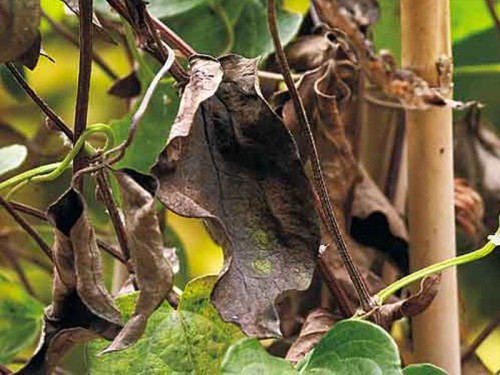
In addition to the wilt, the plant is infected with mildewing dew, rust and gray rot.
Gray rot is manifested by spots of brown color on shoots and leaves. Infection occurs quickly, so the treatment of the bush must be carried out as soon as possible. The infected bush is sprayed and watered with a solution of Fundazola.
Rust is manifested by the presence on shoots and leaves of red bulbs in which the spores of the fungus are located. Rust leads to gradual fading of foliage. Noticing the first signs of the disease, you should remove contaminated leaves and shoots and spray the bush with 2% burgundy fluid.
The spottedness of the leaves (ascohithosis) is manifested by brown stains at the edges and in the center of the leaves, which they become fragile, dry, holes are formed on them. The disease slows the process of photosynthesis, not allowing the plant to develop and slows down flowering. Infected leaves need to be removed, and the plant is treated with a solution of copper sulfate.
Puffy dew - white bloom on leaves and colors. Plant stops growth and flowering. As prophylaxis, it is necessary to spray the bush with a solution: copper sulfate - 30 gr, soap - 300 gr, water 10 l or a solution of soda calcined soda.
Among the pests of Clematis are found: the attack on the ringer plant, a web tick, to combat any insecticides. As well as snails, slugs that eat young shoots. To destroy pests, bait are used - cabbage leaves, and the places of their movement sprinkle ash.
Splitting Clematis Nelli Moser
Modifying Clematis in the following ways:
- Dividing bush.
- Singing shoots in spring.
- Reproduction of autumn grains.
Method of dividing bush
Receive only for adult plants not older than 6-7 years. More older bushes have a developed root system can break through. To split the bush, you need to dig it, free from the ground and cut out with a sharp knife or a secateur in such a way that each plant has a kidney on the root cake.
Encaping last year's shoots
It occurs in pots with loose fertile soil. Pulp escape is necessary at the site of the node. Pots are plunged into the soil in advance. As young shoots grow, the soil is falling in the form of a tubercle. Already by autumn, good, strong seedlings grow from the plug-in shoots.
Clematis reproduction with autumn grains
It is produced in about October. From the shoots it is necessary to cut off all the leaves and flowers to a well-developed kidney, which will be rooted. Long shoots can be folded and put in the prepared groove in the ground. In the groove there must be a peat layer, as it preserves moisture perfectly and passes the air. It is well staring with dry foliage or hay. Spring landing place is good. In the autumn, young shoots are ready for landing on a new place.
I put on the site of climates Nelly Moser you will not regret. Many large incredibly beautiful flowers with long blossom twice a year, its flexibility, allow you to decorate any corner of your garden and make it cozy and attractive. Liana can decorate the walls of the house, a terrace, a gazebo, fences and even the shame of the pillars and trees. Beautifully Clematis looks against the background of flowering lilac, viburnum and coniferous trees.

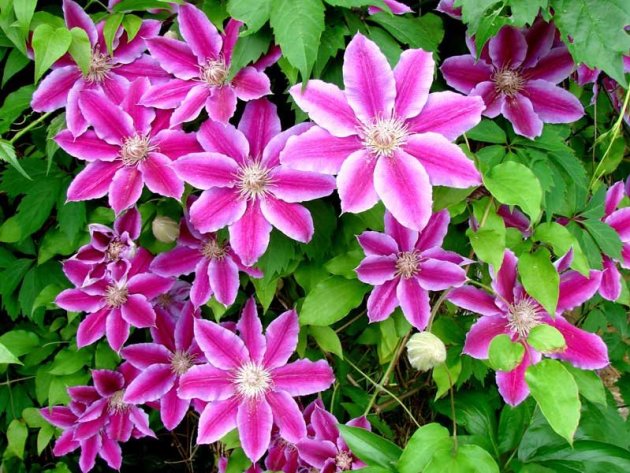
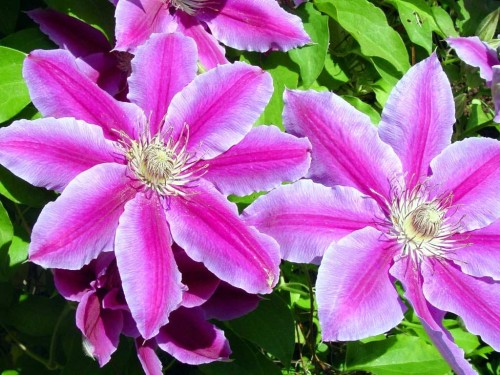
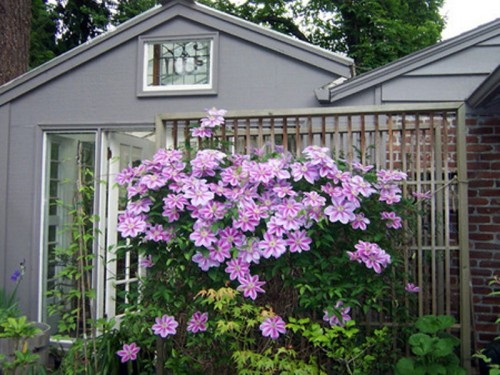
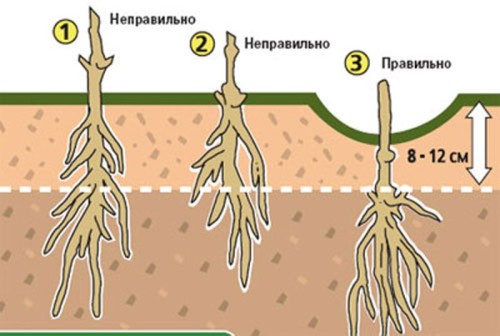
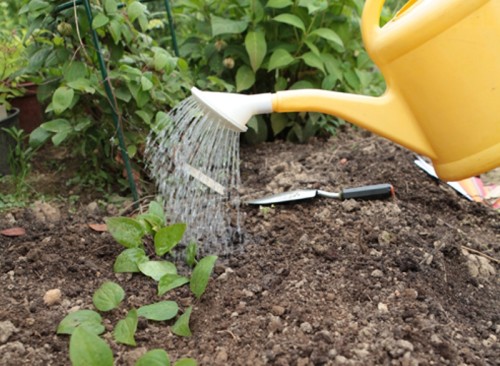
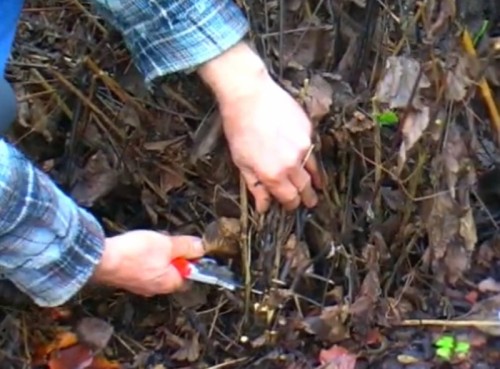
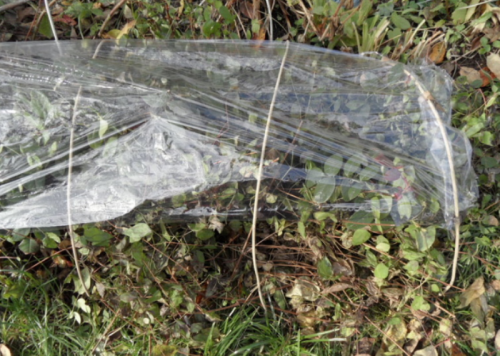
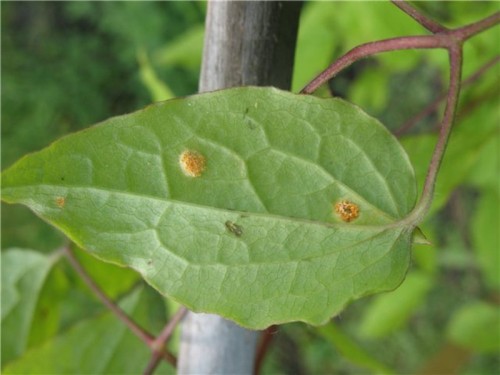
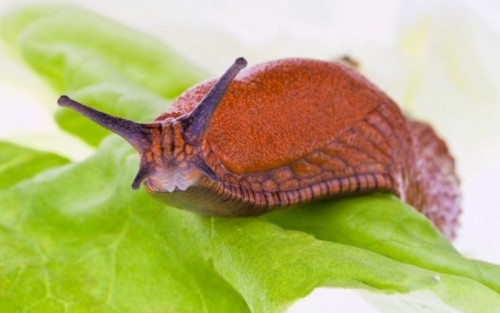
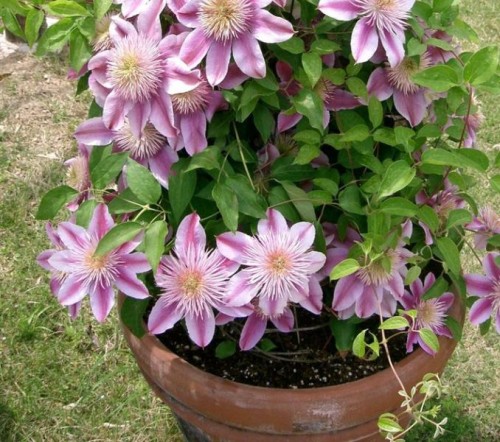
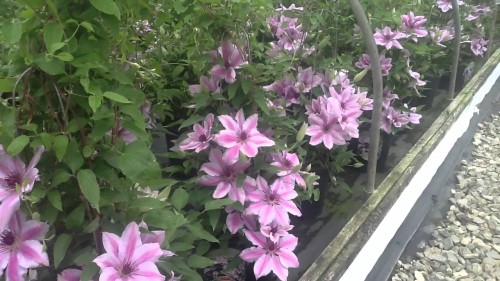






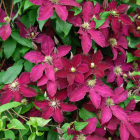
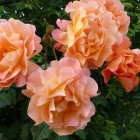

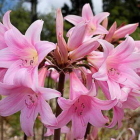
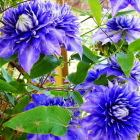
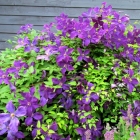
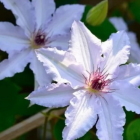
 Start a discussion ...
Start a discussion ...